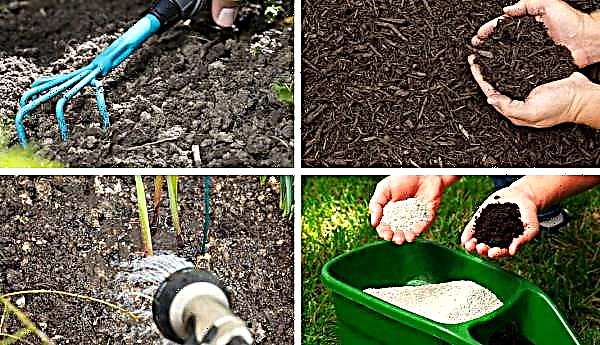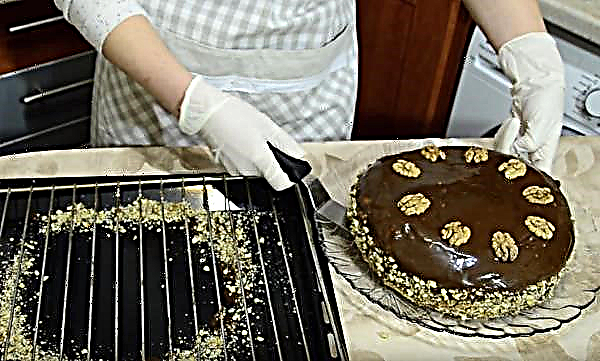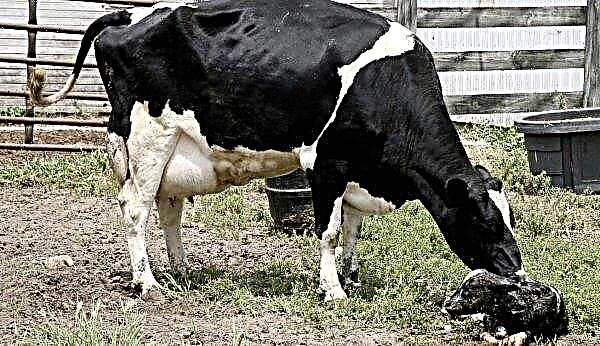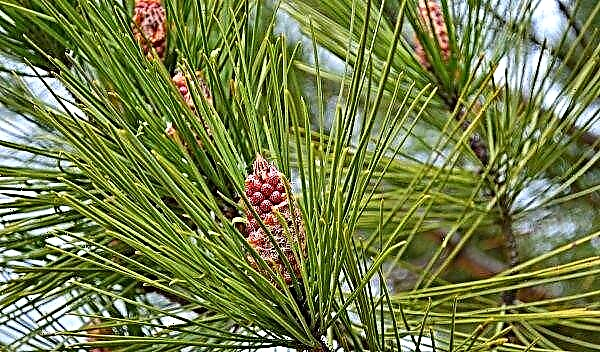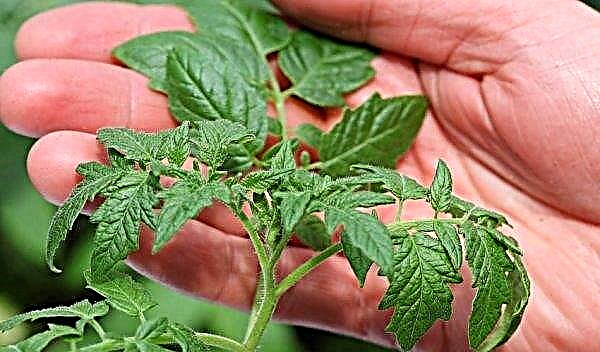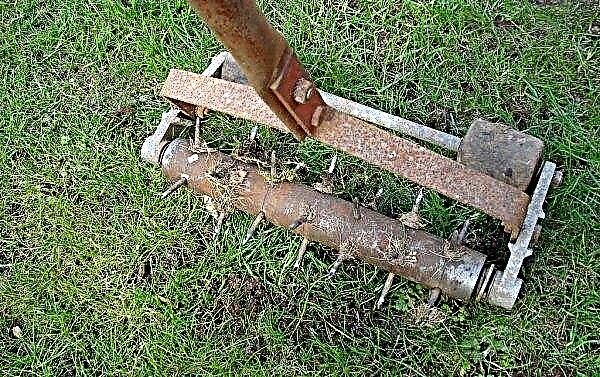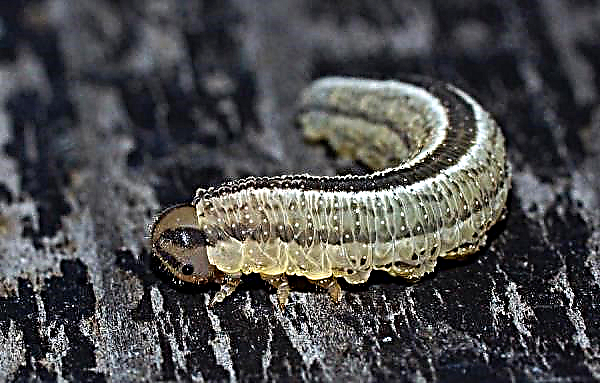In the modern world there is such a variety of varieties of roses that rose growers began to classify these noble flowers into groups, focusing on morphological characters and other criteria. So, today it is customary to distinguish garden, park, hybrid tea, climbing, stambovye, groundcover and polyanthus roses. It is about the last variety of roses, their distinguishing features, the technology of growing and use in landscape design that will be discussed in this review.
What are polyanthus roses: description
Polyanthus, or angelic rose (the Latin name of the group Polyantha) is a low compact plant, the main distinguishing feature of which is a large number of relatively small flowers, abundantly covering the entire bush throughout the summer and part of autumn. The important properties of the group also include unpretentiousness, ease of cultivation and endurance. Polyanthus roses, like hybrid tea roses, owe their appearance to the famous French breeder and owner of a huge rose nursery, Jean-Baptiste Andre Guillot (1803–1882), also known as Guillau-son. But reliable information about the "ancestors" of this variety has not been preserved: according to one version, they became Chinese tea and Japanese dwarf multi-flowered roses, according to another - multi-flowered and re-flowering tea-hybrid.
Polyanthus roses, like hybrid tea roses, owe their appearance to the famous French breeder and owner of a huge rose nursery, Jean-Baptiste Andre Guillot (1803–1882), also known as Guillau-son. But reliable information about the "ancestors" of this variety has not been preserved: according to one version, they became Chinese tea and Japanese dwarf multi-flowered roses, according to another - multi-flowered and re-flowering tea-hybrid.
Polyanthus roses are characterized by such morphological features:
- bush height - from 0.3 to 1 m;
- bush density is very dense;
- leaves - dark green or light green, shiny, small in size;
- the form of inflorescence is racemose;
- the number of flowers in the inflorescence is 10-50;
- the number of flowers blooming simultaneously on the bush is up to 200 or more (during flowering they can completely hide the foliage);
- flower diameter - 2–10 cm;
- the number of flower petals - 10-60;
- flower structure - simple, medium or thick double;
- colors of flowers - red, white, pink, orange, dark purple;
- flowering time - long, and blooming flowers remain for a long time;
- the smell is not pronounced, sometimes completely absent.
Did you know? Rhodes - the Greek island, which is today a very popular resort - as the immortal work of Homer says, was called so by Odysseus himself. Sailing past a patch of land shrouded in the scent of roses, the hero of the Trojan war gave him the name "Rhodos" - Island of Roses.
Polyantha is often confused with floribunda, but the latter have higher bushes of lower density, in addition, the flowers of the floribunda are larger and not so large. Miniature roses differ from polyanthus in a more compact bush structure and fewer flowers in the inflorescence.
Since Guillot, the number of varieties of polyanthus roses has increased many times, among the most popular and interesting it is worth mentioning such:
Advantages and disadvantages of roses
- Jean-Baptiste Guillot, introducing a new variety of roses, set himself specific tasks that were brilliantly solved and identified the main advantages of Polyantha, namely:
- the possibility of growing in open ground;
- compactness;
- frost resistance and the ability to recover quickly in case of frostbite (the ability to root again);
- unpretentiousness to the composition of the soil;
- resistance to powdery mildew, spotting and other fungal infections;
- resistance to waterlogging of the soil;
- resistance to direct sunlight;
- lack of thorns;
- long period of continuous flowering;
- a large number of colors;
- saturated shades of flowers;
- high color fastness - both on the bush and in the cut;
- easy rooting of cuttings;
- the possibility of growing from seeds;
- the ability to easily take root on a stock of wild or park roses;
- simple trimming procedure;
- ample opportunities for use in landscape design.
- Of the shortcomings of angel roses, there are:
- a limited palette of colors (most often there are red, white, pink and orange roses, but yellow and two-tone still have not been brought out);
- small sizes of flowers;
- a fairly simple form of flowers (less refined and noble than some varieties of tea-hybrid roses);
- lack of saturated aroma;
- lack of self-cleaning after flowering (dried flowers must be removed, otherwise the bush quickly loses its decorativeness and becomes untidy);
- burnout of flowers, especially in bright sunshine.
Planting flowers
Seedlings of polyanthus roses are best purchased in specialized stores where you can choose the appropriate variety, as well as get detailed advice on planting and care. However, before you buy, you need to do some preparatory work.
Did you know? The most expensive rose in the world is estimated at 3,000,000 pounds. The variety is called "Juliet", and its author is the famous English breeder and owner of the same company, David Austin, who spent half a dozen years of his life creating a magnificent flower.
Preparatory work
A place for planting roses must be prepared in advance. It is best to do this at the end of summer, since you can’t plant a bush in the just dug up soil: after the soil has subsided, the roots of the plant can become bare, and the rose will freeze at the first frost.
Preparatory work includes:
- choosing the right place;
- cleaning the site of debris, small stones and weeds, and it is necessary to remove not only the aboveground part of the plants, but also their roots, even the smallest;
- digging the earth to a depth of about 20 cm;
- fertilizer application: organic (compost or rotted manure) and mineral (primarily phosphoric, but complex ones can also be used); Too heavy soil is recommended to facilitate the addition of sand, and for additional disinfection, it is useful to mix a little crushed charcoal;
- shelter: so that the prepared place for the rose does not dry out, it should be covered with a healthy green mass, for example, freshly cut grass or peat.

Technology and landing dates
Roses can be planted in autumn or spring. The first method is preferable, since in this case, before the onset of frost, the bush manages to take root quite well, without being “distracted” by the active growth of the aerial part. During spring planting, the plant externally begins to develop very quickly, but due to the fact that the fragile root system is forced to direct all forces to the growth of stems and flowering, the next winter the bush may enter insufficiently prepared. It is for this reason that roses planted in the spring freeze much more often.
Important! On heavy and waterlogged soils, polyanthus roses are planted only in autumn, because after winter such soil becomes too dense, and the forming root system does not receive enough oxygen.
The landing process involves the following actions:
- Remove the shelter from the prepared place.
- Dig a hole in the ground with a depth of 40 cm and the same diameter. Fertilizers at the bottom of the pit do not need to be applied!
- Trim the seedling dry, broken, damaged and thin branches, leaving only 3-4 of the healthiest. If the bush is small and weak, cut the shoots to the level of one eye, in the strong you can leave several buds.
- Carefully inspect the roots, remove damaged processes, shorten the rest by a third.
- Place the seedling in a hole, making sure that the roots do not wrinkle and bend, but are freely located throughout the area.
- Holding the plant so that its growth point is slightly below ground level, fill the hole with the soil mixture by about 3/4.
- Tamp the ground very carefully around the seedling.
- Pour a little warm water over the bush.
- After the water is absorbed, sprinkle the soil circle with a thin layer of dry earth.

Basic rules for growing and caring
Polyanthus roses are easier to care for than other varieties of plants, but nevertheless, certain requirements for a beginner grower must be known and rigorously fulfilled.
Location and optimal conditions
All roses are photophilous plants, and Polyantha is no exception. The bush will develop best in an open, well-lit, but at the same time protected from gusty winds place (polyanthus roses tolerate drafts better than other varieties of the plant, but still this factor is stressful). In the shade, the bush stretches and loses its decorativeness, and in the absence of normal air circulation begins to hurt.
Did you know? The average life span of a rose is 30–40 years, but a bush grows in the German city of Hildesheim, whose age, according to local residents, is one thousand years.
Polyants can grow in different climatic conditions, even in harsh ones like the Urals and Siberia. The plant is not very demanding on the composition of the soil, but prefers loose and fertile soil with a neutral reaction. However, with good care, slightly acidic soil is also not an obstacle to good flowering. Equally well, a rose can grow on both clay and sandy soil. As for humidity, dry air (not more than 50%) is more suitable for an angel rose.
Mulching
For better preservation of heat and moisture in the soil, weed control, as well as preventing attacks of slugs, caterpillars and other crawling pests, an agrotechnical technique such as mulching is used. For these purposes, it is best to use wood chips or bark, but sand and even small pebbles are also suitable. Covering the soil circle around the bush with such material, the grower provides stimulation of metabolic processes in the root system of the plant, increases the air permeability of the soil, and also gives its flowerbed a more neat and well-groomed appearance.
Watering and fertilizing
Too frequent watering "angel flowers" do not need. Depending on the air temperature, you can water the flower bed once a week or even less. The exception is young seedlings, in dry weather they should be watered every 6 days. Starting from the second half of August, the amount of moisture introduced into the soil should be reduced so that the bush does not release new shoots, which still will not have time to form before the onset of cold weather.
Recommended Reading

If mulching has not been carried out, after watering, the soil circle must be loosened to ensure air circulation and moisture preservation in the soil, while simultaneously removing emerging weeds. Roses need to be fed with both organic and mineral fertilizers, alternating between them. However, it should be borne in mind that the first top dressing after planting a bush can be carried out no earlier than 12 months later.
As organic dressing, you can use chicken droppings. To prepare the working mixture, the fertilizer is first diluted with 20 parts of water, left to infuse for a week and then again diluted with water in a ratio of 1: 3. The resulting infusion bushes are watered at the beginning of the season and at the end of each flowering period. In addition to chicken droppings, roses respond well to mullein, rotted manure or compost.
As for mineral fertilizers, the scheme for their use looks like this:
| Type of dressing | Drug example | Application Time |
| nitrogen | "Urea", "Ammonium nitrate" | at the beginning of the season; after the first wave of flowering |
| complex (phosphorus-potassium-nitrogen) | Ammofoska, Nitrophoska, Superphosphate | starting in July - 2-3 times per season |
Pruning
Pruning roses is a must for any variety of this plant. For the Polyantha group, this procedure has its own characteristics. So, to ensure high branching and, correspondingly, abundant flowering, the young bush is radically shortened immediately after planting, leaving 2–3 eyes on short shoots on each shoot and 1–2 eyes on tall varieties. In addition, you need to remove all old (dry, woody or darkened), diseased and weak shoots, cutting them off at ground level. In subsequent years, the procedure is carried out according to the same principle - strong shoots are shortened by a third, all others are removed. The number of shoots that should be left for further development depends on the age of the bush: in young people this number can be limited to 3-4, then increasing it to 8. During flowering, pruning is carried out only in relation to dried flower stalks. In the autumn, with a sanitary purpose, sick and unformed branches are cut off.
In subsequent years, the procedure is carried out according to the same principle - strong shoots are shortened by a third, all others are removed. The number of shoots that should be left for further development depends on the age of the bush: in young people this number can be limited to 3-4, then increasing it to 8. During flowering, pruning is carried out only in relation to dried flower stalks. In the autumn, with a sanitary purpose, sick and unformed branches are cut off.
Important! The weaker the rose, the stronger it needs to be cut. But strong and tall varieties are not recommended to be drastically shortened, because after this procedure the plant begins to grow intensively, which can lead to later and less abundant flowering.
Shelter for the winter
Polyanthus roses are frost-resistant plants and can tolerate lowering temperatures to -15ºC. Nevertheless, for the winter they are recommended to be covered. In regions where winters are not too severe, a bush with enough light shelter from fallen leaves, peat or coniferous paws, however, if frosts are expected to be severe, especially in the absence of snow, the issue of protection should be taken more seriously. In this case, in addition to shelter, the bush should also be spudded to a height of 10 cm. Do not trim and cover the bushes too early. On the one hand, pruning before the onset of the first frosts is perceived by the plant as an incentive for active growth, as a result of which the rose may simply die. On the other hand, gradual cooling for the bush is a good hardening and preparation for wintering. The best time to carry out the procedure is the period when the night temperature at least once dropped to -2 ... -3ºC (depending on the climatic zone, this may be the end of October or November).
Do not trim and cover the bushes too early. On the one hand, pruning before the onset of the first frosts is perceived by the plant as an incentive for active growth, as a result of which the rose may simply die. On the other hand, gradual cooling for the bush is a good hardening and preparation for wintering. The best time to carry out the procedure is the period when the night temperature at least once dropped to -2 ... -3ºC (depending on the climatic zone, this may be the end of October or November).
When covering roses, one should be guided by the following rules:
- The procedure is carried out in dry weather.
- Only dry materials are used for shelter.
- Shelter is preceded by sanitary pruning.
- The insulation layer needs to be well and reliably fixed, otherwise the structure will collapse under a gust of wind.
Important! Polyanthus roses, rooted from cuttings, in the early years are quite weak, so they need to be covered carefully for the winter, otherwise they may die.
Breeding
One of the most valuable qualities of the polyanthus rose is that it propagates very easily, and for this, almost all methods can be used - from planting seeds to various vegetative methods (cuttings, layering, grafting, dividing the bush):
- Seeds The "angel flower" can be purchased at the store or assembled on your own, for this it is enough just to open the fruit that is not fully ripened. Before planting, seeds must be stratified (a procedure that mimics the wintering of seeds in the soil). To do this, the prepared material should be laid out between two layers of wet cloth, wrapped with polyethylene and placed in the refrigerator (vegetable compartment). From time to time, the fabric needs to be ventilated and additionally moistened. You need to start the procedure at the beginning of winter. By about February, the seeds should “hatch” (let out the first thin root). As soon as this happens, they need to be planted in a small pot and put in a warm, well-lit place. When a young plant grows stronger, it can be planted in open ground.This is best done in the fall.
Video: Rose propagation by seeds
- For breeding Polyantha cuttings at the beginning of summer, a lignified shoot is cut from the plant and divided into segments with one or two buds on each. Then the cuttings are treated with a rooting agent (Kornevin, Heteroauxin, etc.), buried in a mixture of peat and sand at an angle of 45 °, covered with a jar or plastic bottle and placed for rooting in a warm and slightly shaded place. You can plant such a stalk in open ground next spring, while during the winter the plant should be in a cool room at a temperature slightly above zero.
Video: propagation of roses by cuttings
- For multiple plants from one bush the rose must be carefully dug from the ground and, without clearing the earthen lump completely, with a clean and sharp knife, cut the root together with the aerial part into two or three parts. Each obtained fragment should be planted in the usual way, having previously dusted the cutting site with crushed charcoal for disinfection.
Important! It is not recommended to decorate lawns with roses, since the presence of a decorative bush makes it difficult to cut grass. In addition, a neat and well-groomed lawn is a self-sufficient design element, so the tall flowers on it look alien and cause a feeling of harmony.
Pest and Disease Control
Polyanthus roses are considered one of the most enduring representatives of the Rosehip genus, but this does not mean at all that it will never be affected by diseases or pests. Below are the most common diseases of the "angel flower", their main symptoms, causes and treatment methods.
Black spotting:
| Symptoms | dark spots on the front side of the sheet plate; drying and falling of affected leaves |
| Causes | excessive air humidity at a relatively low temperature (+ 19 ... + 25ºC) |
| Preventive measures | spraying with a decoction of nettle or ivy (used in case of prolonged rains) |
| Control measures | treatment with preparations based on penconazole, triazole or mancozeb (“Skor”, “Topaz”, “Ridomil Gold”, “Profit”); spraying "Fitosporin", "Tiovitom Jet"; use of immunostimulants (Epin-Extra, Zircon). |

Powdery Mildew:
| Symptoms | a web-like white coating covering the leaves; leaf deformation; bud dropping |
| Causes | the disease causes a fungus that spreads very quickly in any weather and in any conditions, it just needs to get to the site |
| Preventive measures | timely application of phosphorus-potassium fertilizers |
| Control measures | spraying with Bordeaux liquid; soap-soda solution |

Rose rust:
| Symptoms | brown or yellow spots on the leaves; cracking of the bark; branch curvature |
| Causes | the fungus is often carried on a rose from wild rosehip bushes or is already present on a newly acquired plant; high humidity contributes to the spread of the disease |
| Preventive measures | spraying with Bordeaux liquid according to the following scheme: double treatment in April with a break of 3 days, in the future - 2 times a month |
| Control measures | treatment with Toxin-M or Skor |

Of the pests, the polyanthus rose is most annoyed by:
| Parasite name | Symptoms | Control measures |
| Aphid | visible with the naked eye (tiny insects sucking juice from stems and leaves) | removal of the most affected areas of the plant; spraying with a solution of wormwood; insecticide treatment against sucking insects (Tanrek, Biotlin, Kalash, etc.) |
| Rose circadian | visible to the naked eye in the lower part of the bush; on the leaves appears as white spots | saturated soapy solution |
| Spider mite | yellow spots on the leaves; spider webs stretching from leaf to leaf | removal of affected parts; treatment with infusion of garlic, yarrow or horsetail |
| Rose leaflet | leaf curl (usually occurs in early summer) | removal of affected parts; insecticide treatment (“Coragen”, “Cesar”, “Lipidocide”, “Liber”, “Confidor”, etc.) |
| Roseburner | small holes on the leaves | removal of affected parts; wormwood treatment |
Use in landscape design
Compact, hardy and unpretentious, besides, long and plentifully blooming polyanthus roses from the time of their appearance have been a real find for landscape designers. However, if large bushes of park and tea-hybrid roses usually try to place in front of the house or in the central point of the site, so that the bright colors, noble forms and delicate aroma of these plants emphasize the taste and status of the hosts, then small but lush polyanthus roses are more often used as a picturesque border of paths around arbors, as well as in remote and romantic corners, where their tenderness, romance and sentimentality will be much more useful. Designers recommend using varieties with red flowers to owners of houses with white walls, since against a light background, scarlet colors look especially stylish. As a border plant, it is best to use low-growing varieties of Polyantha. They are usually planted at a small (from 30 to 50 cm) distance from each other, due to which, growing, the bushes create a single flowering "path".
Designers recommend using varieties with red flowers to owners of houses with white walls, since against a light background, scarlet colors look especially stylish. As a border plant, it is best to use low-growing varieties of Polyantha. They are usually planted at a small (from 30 to 50 cm) distance from each other, due to which, growing, the bushes create a single flowering "path".
Polyanthus roses are the best suited for the design of the so-called rabatka - narrow rectangular flower beds located in front of the house or along the fence. The composition of bright and numerous red or pink flowers, covering small bushes with a hat, can be blue or white shades of wildflowers - cornflowers, lavender, sage, delphinium, bluebells, iris, lilies.
Polyantha looks very nice in separate containers or flowerpots, which can decorate not only the gazebo or the entrance to the house, but also the open balcony or porch in an ordinary city apartment, bringing elements of landscape design into it.
Polyanthus roses have a huge number of undeniable advantages. Their flowers are not as sophisticated and fragrant as those of hybrid tea varieties, but in the courtyard of a private house or in a summer cottage, unpretentious, easy-to-care plants are much more valuable, and most importantly, they are characterized by almost continuous and very plentiful flowering. It is these qualities that Polyantha is famous for, not without reason this type of rose has become increasingly popular in recent years.


